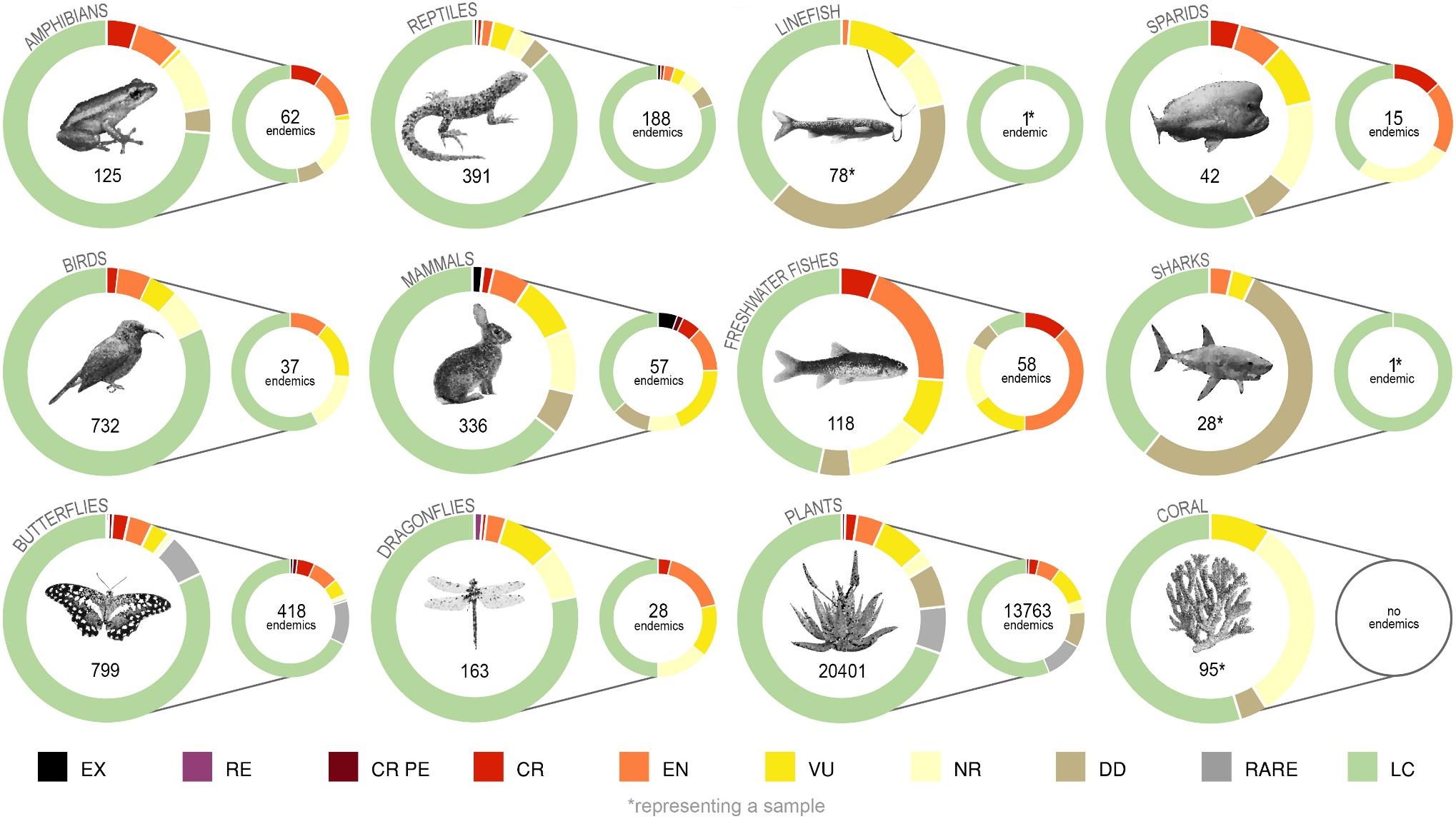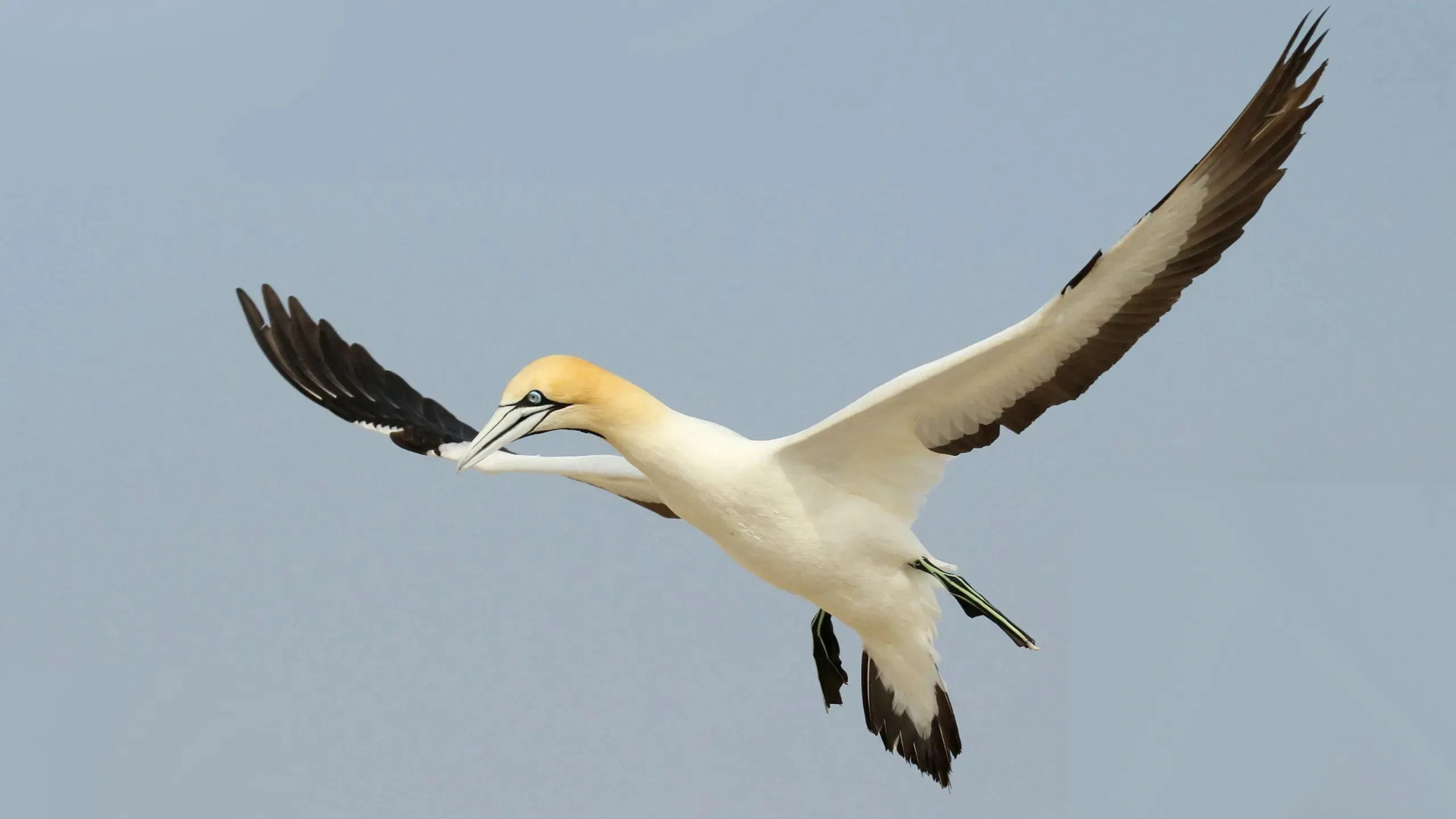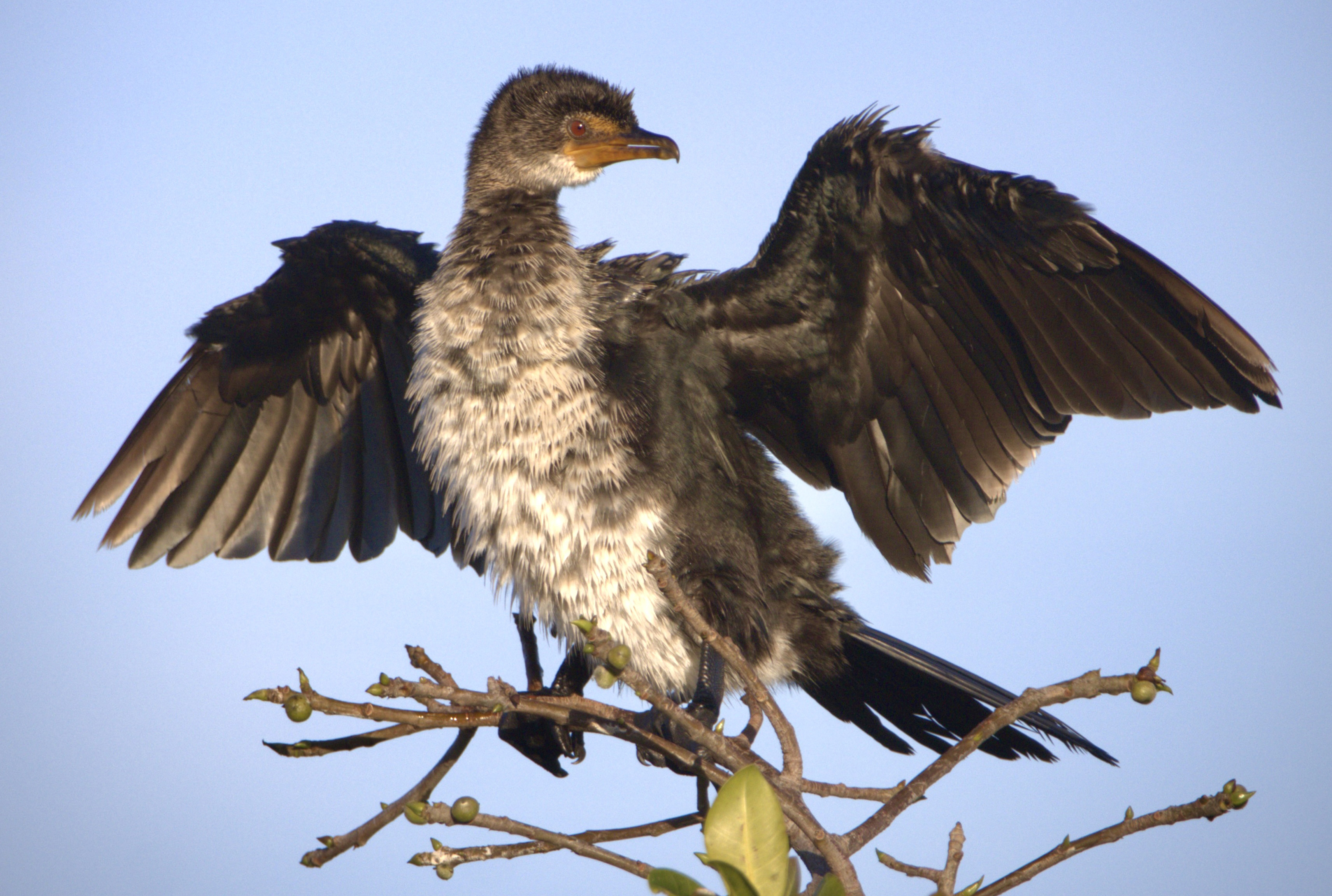BIODIVERSITY UNDER THREAT
Reversing the Red — the battle to halt species extinction in South Africa

A considerable amount of work, time and investment is needed for the recovery of freshwater fish, amphibian, bird, mammal and plant species which are on the brink of extinction or vulnerable and endangered in South Africa.
From the tiny squeaking desert rain frog on the Namaqualand coast of South Africa to the little freshwater Twee River redfin endemic to the eastern Cederberg part of the Olifants River System, some species in South Africa are in crisis and guarding against their extinction is an expensive, time-consuming process.
Over the next five years, investments exceeding R1-billion are needed to recover species that are on the brink of extinction and under threat in South Africa, according to cost estimates based on Red List assessments done by the South Africa National Biodiversity Institute (Sanbi) and its partners.
This was revealed at the South African satellite event of Reverse the Red’s World Species Congress last week, where speakers from national conservation and biodiversity organisations, NPOs, public sector and special interest groups came together to take stock of the status of species conservation in South Africa.
Under the spotlight was the work that’s being done to save species on the brink of extinction and address species conservation challenges that remain unmet.
Conservation efforts are being undertaken in South Africa through landscape and seascape conservation initiatives.
But Domitilla Raimondo, the threatened species programme manager at Sanbi, asked: “What happens when those efforts are not enough? Where stopping habitat loss and protecting areas is not enough and they [species] are too threatened to be conserved by these landscape-level initiatives?”
Guidance has recently been developed by the Global Species Action Plan from the International Union for Conservation of Nature, supporting the implementation of the 2022 Kunming-Montreal Global Biodiversity Framework, to assess the conservation status of all species and identify those needing targeted recovery action.
This is to inform Target 4 of the framework, which has 23 action-oriented global targets until 2030 to halt the human-induced extinction of threatened species and for the recovery and conservation of species.
Raimondo said that South Africa had completed Red List assessments for 12 taxonomic groups in South Africa.

These show what proportion of species are threatened with extinction. The bigger circle shows all the species in that group, and the smallest circle shows how many are endemic. The colours show how threatened they are — red is critically endangered, orange is endangered, yellow is vulnerable, brown is if not enough is known about it, and green means they are under no threat.
After the Red List assessments were done, Raimondo said they were able to identify which species needed what and which ones were in serious trouble.
“Over the last three weeks, I’ve asked all our species experts to spend the effort on what species need recovery and exactly what they need. Do they need site management, invasive clearing, ex situ conservation and reintroductions, how much is that going to cost? They came up with detailed spreadsheets that allow us to do the costs,” she said.
It was found that investments exceeding R1-billion over the next five years were needed to recover species on the brink of extinction and under threat in South Africa.
This assessment forms part of the proposed actions from the Global Species Action Plan.

The Cape gannet. (Photo: BirdLife South Africa)
Species in urgent need of recovery actions
“We have the expertise, the track record and the scientific and biodiversity proficiency to effectively halt the rapid decline of species toward extinction. We have done well and, in many respects, set best practice standards that other regions and nations follow. However, much remains to be done,” Raimondo said.
1 Freshwater fish
Based on the above, the most threatened wildlife group in South Africa is its freshwater fish. Thirty-five freshwater fish species and 30% of all the freshwater fish in South Africa are in urgent need of recovery action. These include the giant redfin, Clanwilliam sandfish and the Barrydale redfin.
Conservation interventions have begun for 11 out of the 35 species. To recover all the species, R168,105,000 is needed over the next five years, whereas the expenditure for the past five years was only R18,680,000, meaning a nine-fold increase in spending is needed.
2 Amphibian species
Amphibian species are the next-most threatened group in South Africa with 11 in need of urgent recovery, including the rough moss frog, Table Mountain ghost frog, micro frog and the desert rain frog. Raimondo said 10% of South Africa’s amphibians needed urgent management interventions and interventions had begun for only six of the 11 species.
To achieve the necessary targets, a four-fold scaling up of resources was required. To recover all species over the next five years, R92.5-million is needed, as opposed to the R22.3-million that was spent over the past five years.
“A lot of critically endangered species are highly impacted by invasive alien plant species, and many of them are restricted only to one or two sites. The desert rain frog is collapsing at the moment because of climate change and mining,” Raimondo said.
3 Mammal species
South Africa has 14 mammal species in need of urgent recovery action, including the Hartmann’s mountain zebra, black rhinoceros and bontebok. Fifty per cent of these are small mammals, like the riverine rabbit and De Winton’s golden mole, which are critically endangered.
Raimondo said, “Golden moles in particular have not yet had a lot of conservation attention, so there’s work needed. We haven’t managed to do a proper costing analysis yet on mammals; it’s incredibly difficult because there’s so many partners … but it’s pretty high numbers needed for mammal consultation.”
Five per cent of South Africa’s 299 mammal species need urgent management interventions, all species are receiving management interventions and no scaling up of resources is needed.
4 Bird species
Two per cent of South Africa’s 732 bird species — 16 — are in need of urgent recovery action.
“Botha’s lark is crashing, so is the blue swallow. Our vultures are in big trouble — a lot of work is happening on them, but they are still in very serious trouble,” Raimondo said.
Half of the birds that need urgent intervention are marine species. The African penguin is declining extremely fast with much needed to conserve its fishing grounds.
Read more in Daily Maverick: Lawsuit launched against environment minister in bid to halt African penguin extinction
Management interventions have begun for all 16 species, but these need to be upscaled 15-fold, according to cost estimates.
Raimondo said that to recover all 16 species, R695-million was required for the next five years as opposed to the R44.85-million spent over the past five years.

Long-tailed cormorant. (Photo: Caroline Rowbottom)
5 Plant species
South Africa has 109 plant species in need of urgent recovery action. Raimondo said management interventions had begun for only 15 of these (14%).
“We have a big challenge with plants in that many of them are being illegally poached. While we can collect them for ex situ conservation, we can’t yet put them back. Overall, we’re only working on 15 out of 109,” she said.
Raimondo said a 40-fold upscaling of resources was needed to recover all the plant species, requiring an expenditure of R309.80-million over the next five years as opposed to the R7.69-million that was spent over the past five years.
“We know what it’s going to take to achieve our Target 4 and it requires a significant upscaling of our investment. We have the know-how, we have the knowledge of what’s needed, we have the people, we just need the financing,” Raimondo said.
The overwhelming sentiment at the South African satellite event was that it is possible to bring these species back from the brink of extinction.
Can we ‘reverse the red’ for marine fish species?
Dr Judy Mann-Lang from the Two Oceans Aquarium Foundation told the story of a recovery that took 26 years.
The species is the seventy-four seabream, the Polysteganus undulosus, a fish species endemic to southern Africa and found from Cape Town to southern Mozambique.
The name “seventy-four” was given to it because it supposedly resembles the man-o’-war ships of old that had 74 gun ports.
Mann-Lang said the seventy-four — which grows up to 100cm and has a lifespan of over 20 years — was heavily exploited and intensively targeted throughout the 20th century by commercial and recreational line-fishing vessels, especially in their spawning grounds in southern KwaZulu-Natal.
Mann-Lang said that in the 1910s, commercial and recreational fishers were catching about 1,400 tonnes of seventy-four each year. By 1923, this had dropped to about 600 tonnes. By the 1950s, it was under 400. By 1985, the species had virtually disappeared from the catch.
In the 1950s, fishermen requested authorities to do something about declining catches. In 1962-63, the Oceanographic Research Institute (ORI) did some studies on the biology of the seventy-four.
In 1985, the first regulations were implemented and reviewed in 1992. In 1996, ORI conducted a stock assessment which found there was only 5% of the spawning biomass left — they still had a massive problem.
In 1998, South Africa implemented a 10-year moratorium on catching seventy-fours. In 2007, the species showed little sign of recovery and the moratorium was extended for another 10 years.
In 2019, there was a rezoning of the Aliwal Shoal to close seventy-four spawning areas, and South Africa declared new Marine Protected Areas (MPAs) and offshore MPAs to protect the deeper reefs where the adults and juveniles live.
In 2024, there is now a draft Red List assessment to downgrade the seventy-four from “critically endangered” to “endangered”. After 26 years of efforts to halt the decline, signs of recovery of the seventy-four are starting to appear.
“We are starting to see signs after 10 years of the moratorium of recovery of this incredible species. Twenty-six years, the first 10 years and the second 10 years plus another six years. It takes time, but we’re starting to see signs of recovery.
“Fishermen are saying now that they are catching this fish when they fish on the deep reefs. We’re also starting to see on our baited remote underwater cameras signs of seventy-four… For conservationists, for us to see this happening is incredible,” Mann-Lang said.
She said this showed it was possible to reverse the red. “It’s difficult and takes time but it can be done. When we first saw these videos, we actually cried because we realised just how vulnerable these fish were and how conservation action can help.” DM



















Next year is the 20th Anniversary of the Pelican Watch. This conservation management strategy has teams if volunteers, led by the SANParks Honorary Rangers: West Coast Region, spending a week on Jutten and Malgas Islands to protect the breeding Cape Hannes and three cormorant species during their breeding season. 15 shifts from November to mid February see over 120 people involved. All costs have been borne by the volunteers, the SANParks Honorary Rangers, and SANParks who provide transport. In its own way, this program is supporting three endangered species. For more information please contact us at [email protected]
One billion rand over five years to prevent the extinction of several species is next to nothing. One contributing problem that we could really do something about is the escalating inundation of invasive plant species. There are actually laws that forbid the growth of category one and two species on private property and it should be mandatory that the sale of property require certification of being invasive free (as is required i.r.o. wood-destroying insects). The problem is that the worst offender is the state as evidenced when one drives along almost any public road. In many cases it is almost impossible to find any indigenous species so overrun are these areas with invasives. Embarking on a nation-wide campaign to rid public land of these would provide many jobs and create quantities of bio-waste that could be converted to useful compost.
Agree 100%. Invasive plants typify government’s maintenance programs. It is obviously cheaper to manage plants when they are fewer and in isolated localities. Instead, we leave it until there is a massive problem and the cost will be in the billions of rands to eradicate these invaders. Likewise, the money spent on programs such as Working for Water are wasted as they cannot keep up with the rate of spread of invaders, thereby nullifying the effects of any work they are doing. Total eradication is the only answer, and the need is for short-, medium-, and long-term targets to achieve this. This would include following-up on work already done to ensure no re-infestation occurs.
This concept applies to any other form of maintenance programme – plant, equipment, mechanical, infrastructural, personnel skills, and so-on and so-forth. Key is staying on top of the fight, and statistics are therefore extremely valuable to indicate where we stand on multiple issues. Use the stats wisely in planning ……..
Thank you for highlighting this on the International Day for Biodiversity. The overwhelming threat to our biodiversity, which you fail to mention, is the ever increasing human footprint, caused by both increasing human numbers and activity. To save biodiversity, we need to give nature some space from us. And with a population explosion happening in sub-Saharan Africa right now, space for nature is shrinking rapidly.
And yet all our government can do is attempt to publish a bill that monetises everything so that it can be exploited to extinction. It is an aberration that both DFFE and DMRE are supposed to be custodians of our environmental endowments and the protectors of the environmental rights enshrined in or constitution.
Lots of work to be done on all fronts but it’s worth doing.
Let’s not forget about the damage caused by cats; the sooner we can exterminate feral cats and get all domestic cats indoors, the better.
None of the leading parties & upstarts (ANC/DA/EFF/MK) bothered including anything about animal/wildlife welfare in their manifestos at a critical junction… Food for thought.